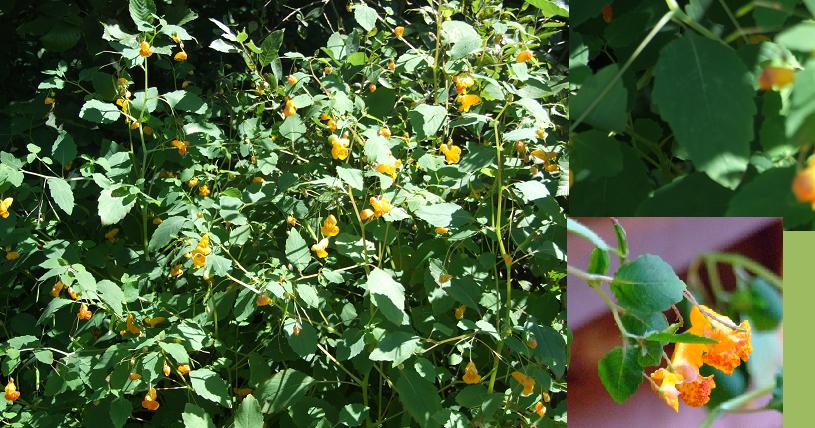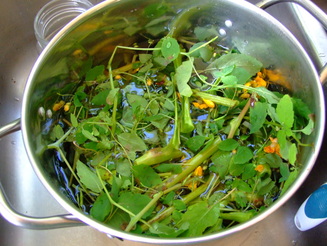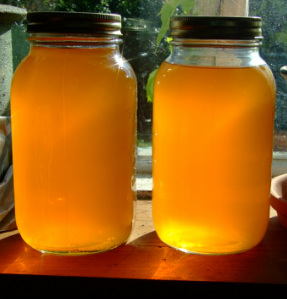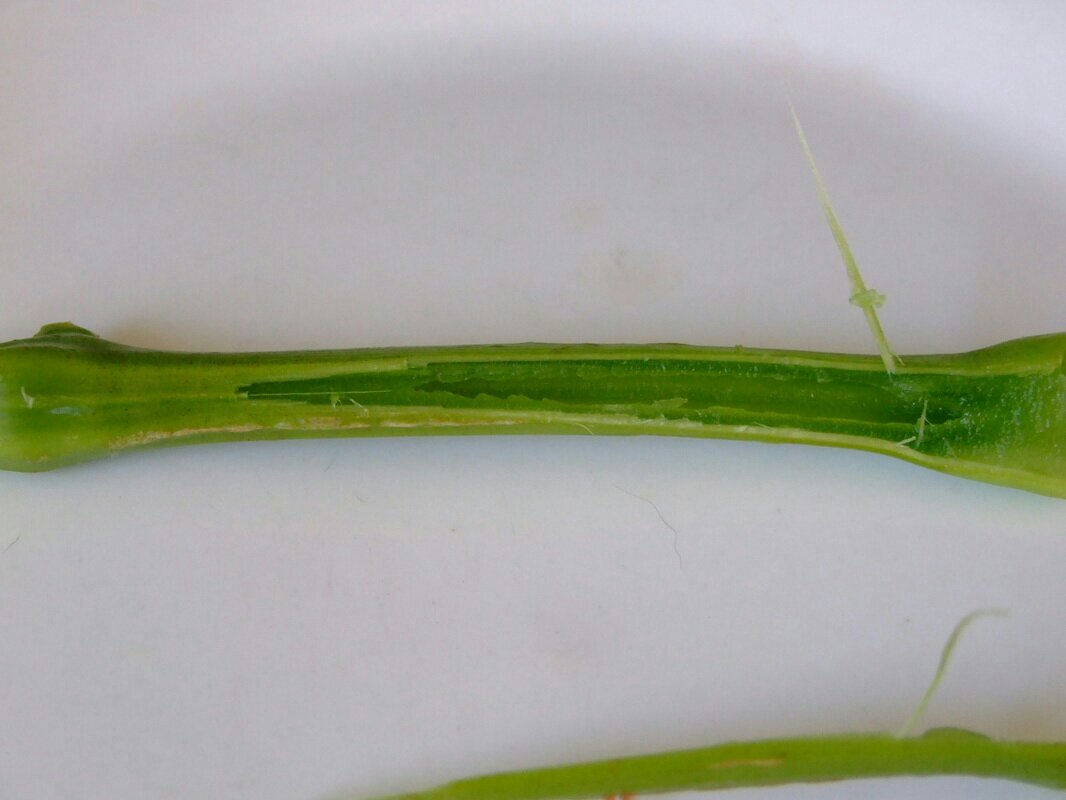I decided to start with jewelweed, simply because it is blooming in great perfusion all around me right now and plants are usually easiest to identify when they are in bloom.
Jewel weed, Impatiens capensis, is an annual which grows in moist shaded areas, and is common throughout the entire eastern half of North America from southern Saskatchewan to Newfoundland south through to South Carolina, Alabama and Oklahoma. Reaching 3- 5 feet it is most easily identified when in bloom. You should look around now to identify colonies as they will readily self seed in the same area. You should wild craft them before they bloom next year. The sap within the stem, and oils in the leaves are at their most potent before the plant blooms. You can harvest after it blooms and have a reasonable product, but it will always contain the most potency before bloom. Remember when wild crafting to take no more than 1/3rd of any given population.
To identify when not in bloom check for the following: oval, round- toothed leaves. Leaves at the bottom of the plant will be opposite, leaves near the top of the plant will alternate. upper ones alternate. Before blooming the stems will be almost translucent and will also have the large nodules in the stems. Pale Jewelweed has yellow flowers, Spotted jewelweed has orange flowers with dark red dots. (see photo above) The Spotted Jewelweed variety is most commonly used medicinally, although the Pale Jewelweed may also have medicinal properties . It will be helpful to have a good field guide for your area.
While this plant has been used for centuries as as treatment for poison ivy and poison oak, it has moderate anti histamine and anti-inflammatory properties making it very useful for any allergic reaction of the skin including bug bites and hives. I also give it to the men folk around here as a treatment for heat rash. It has also proven effective when used in combination with other herbs as a treatment for acne. Traditionally it has been used as a poultice for treatment of bruising, burns cuts or wounds,warts and ringworm. I also include it in certain salves for healing of cuts and wounds and in my "excema remedy".
I particularly like jewelweed as it is safe for use on the animals. I use it for treating bug bites, including allergic reaction to fleas, and in my healing ointment for the barn. I also find it useful to use as part of a poultice to help heal sprains.
The most common way to use jewelweed is to make an infusion for topical use. It is not recommended to take jewelweed internally. To make an infusion place cut up plant in a pot, you can use the stems and leaves, cover with water then cover and bring water to a boil. Once the water is boiling reduce heat and simmer until water is reduced by half.
If you come in contact with poison ivy or oak the quicker you can apply jewelweed to the affected area the less severe the symptoms will be. You should cut a piece of jewelweed and open the stem. Apply the sap inside the stem directly to the affected area. If it is late in the season and the plant is blooming or has already bloomed, you can scoop some of the soft tissue from inside the stem and squeeze some sap. You can also make a poultice from the leaves by rubbing them between your palms to release some of the oil and the placing them directly on the affected area. You can hold them in place with a sock or gauze or whatever you have on hand.
**Please note. I am not a doctor. This post is not intended to diagnose, treat or cure any disease. The information presented here has not been verified by Health Canada.**






 RSS Feed
RSS Feed
